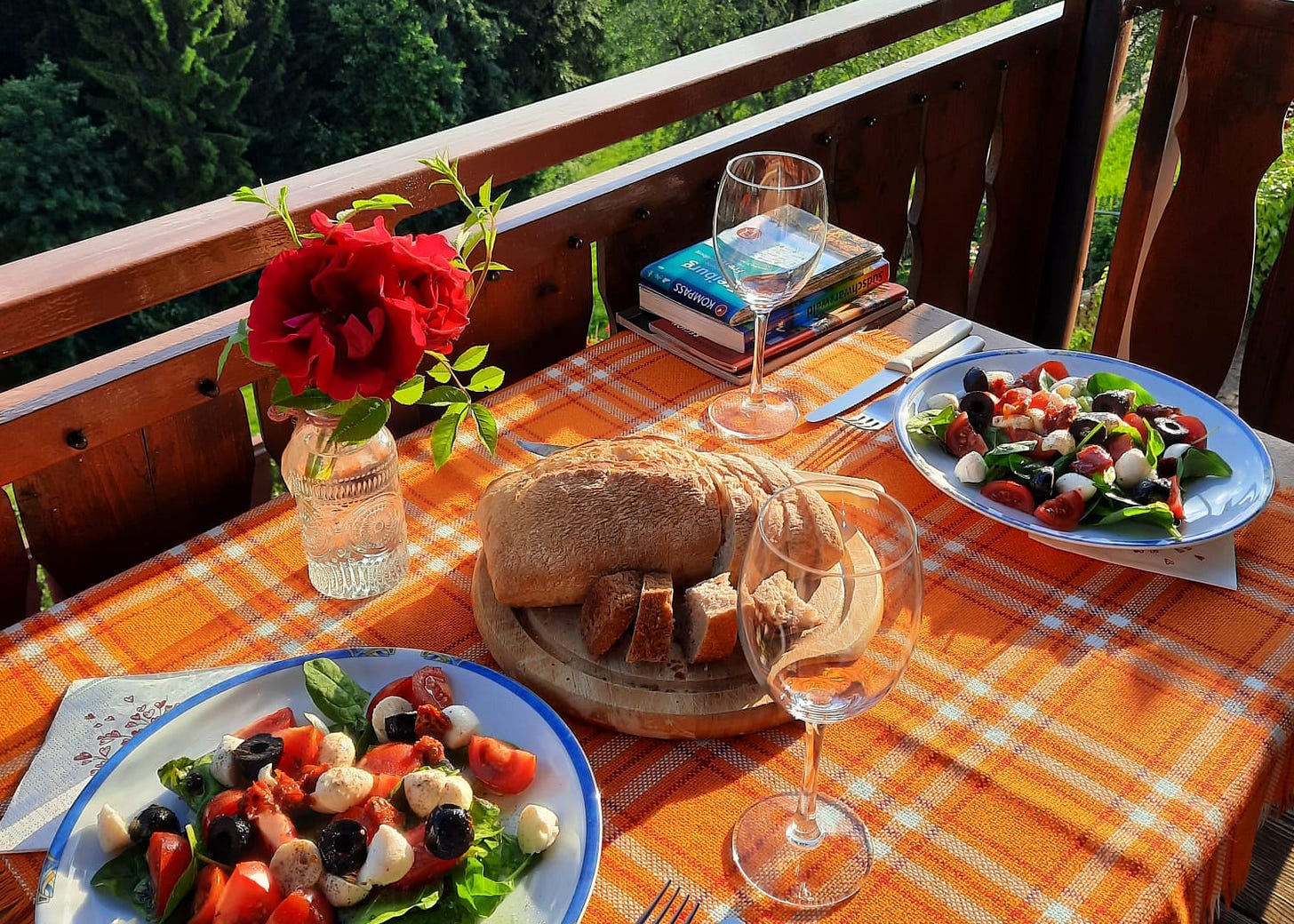A conversation
Introducing the river to the sky
One day in July, a friend and I were having lunch on her patio in a small German town near Frankfurt. It was a perfect summer day, sunny and warm, with a few clouds. We were surrounded by plants, potted tomatoes and herbs on the patio, flowering shrubs around us, bees buzzing, fruit trees, and a vegetable garden beyond the lawn, where we had earlier harvested some lettuce and cucumbers. We had just finished the salad when my friend raised her wine glass and let out a long, contented breath. ‘I love plants so much that I could just eat them up.’ She said, ‘In fact, I just did.’ ‘Yes,’ I replied, ‘and now they are eating you.’ She looked at me strangely and assured me that there were no carnivorous plants nearby. ‘No, but what you just said reminded me of some calculations I read about the other day.’ ‘I am inviting a scientist to lunch, and what I get in return is calculations? I am supposed to be on vacation,’ she complained.
‘Hear me out.’ I responded, ‘You know that you exhale carbon dioxide, right? What I read is that it makes up about four percent of your breath and that the average exhale is half a liter of air. Turns out that you just exhaled half a sextillion molecules of carbon dioxide.’ She laughed and said ‘You made that up. There is no such thing as a sextillion.’ ‘It is sextillion, with a soft s.’ I corrected her. ‘I had never heard of that word either. But I checked, and that’s what one calls a number with twenty-one zeroes behind it. The average breath contains half a sextillion carbon dioxide molecules.’
‘This turns out to be a very educational lunch.’ She said, ‘And one urgently calling for more wine.’ She refilled both of our glasses. ‘Here’s to sextillions with a soft s!’ Raising her glass, she asked ‘But what has all this to do with plants eating me?’ ‘You are sitting right next to one,’ I said, ‘It’s a string bean, right? Don’t you think that a few of those carbon dioxide molecules, maybe a million or so, must have been taken up by those leaves and used for photosynthesis? The plant is making sugar from of those molecules right now. Maybe tomorrow’s food for you.’
‘What does sugar have to do with breathing?’ she asked. ‘I learned in high school that I breathe in oxygen and make that into carbon dioxide.’ ‘Many people think that,’ I replied, ‘But that is not really what happens. The carbon dioxide you exhale comes from sugar and other stuff in your food. The oxygen you breathe in turns into water and becomes part of your body.’ I waved away a wasp that was taking an interest in my wine glass. ‘You mean that part of my body actually comes from air?’ she asked. ‘Yes,’ I said ‘Plants do that, too. They take in air and use the carbon dioxide to make it into parts of their body. And they split water and create oxygen, which is what you breathe in. Plants become part of you, and you become part of them. No wonder you love plants so much. They love you back.’
‘How ever did people figure all this out?’ she asked after another sip of wine. ‘And why didn’t I know this?’ ‘You sort of did know it, just not with all the details. Of course, the plants around us do a lot more for us, like evaporate water up into the sky, and this river to the sky conveniently cools down your patio right now.’ I thought about it for a while. ‘You are right, if everyone knew these things, perhaps we would think differently about plants and people and also climate change.’ ‘You should write on your new Substack about it’ she said. So I did, and this is it.



